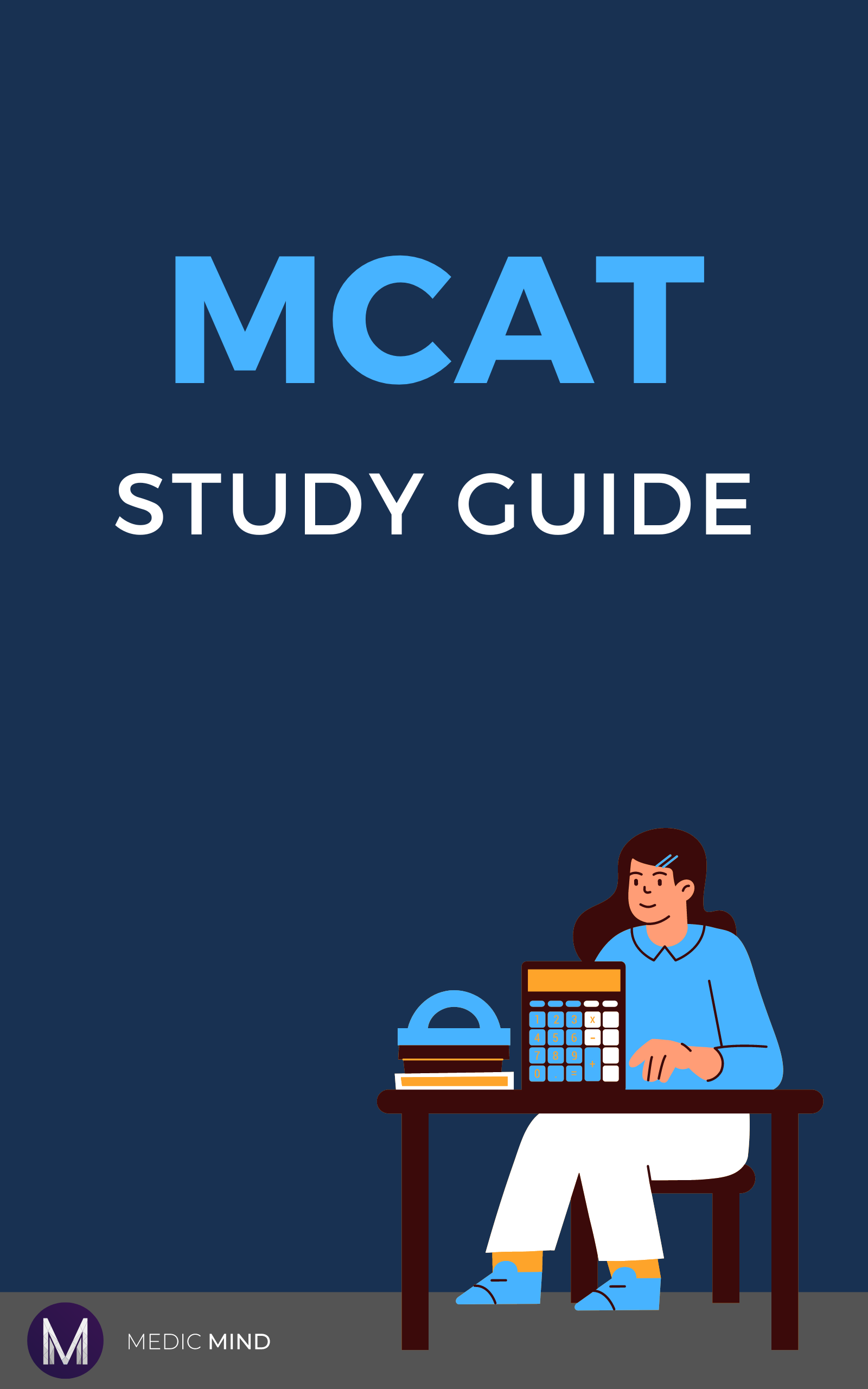Loading...

MCAT Study Tips
Preparing for the MCAT can be daunting, but with the right strategies and techniques, you can approach the exam confidently and maximize your chances of success. This blog post will provide valuable last-minute MCAT study tips to help you maximize your final days before the exam. From practicing with mock exams to focusing on weak areas and from maintaining healthy habits to planning a post-exam celebration, we’ve got you covered. Let’s dive in!
1. The Week Before the MCAT Tips
Do a Practice Run:
Going through a dress rehearsal during the week leading up to the MCAT is crucial. That will help you reduce anxiety on exam day. Practice waking up at the same time you would on the test day, have breakfast, warm up physically and mentally, and plan your commute to the testing center. Visiting the center beforehand will also help you familiarize yourself with the surroundings and address potential concerns or questions.
Address Test Location Questions:
Take the time to answer important questions about the MCAT test location. How long does it take to get there? What is the traffic situation? Is parking readily available? Knowing these details will prevent any unexpected delays or complications on exam day. Additionally, find out the location of the entrance, security procedures, bathroom facilities, locker sizes, and other amenities that may be available to you.
2. The Week of the MCAT Tips
Build Confidence
During the final week of preparation, focus on reinforcing your knowledge and boosting your confidence. Review flashcards and topics that you are familiar with and excel in. Remind yourself of the hard work you have put in and the progress you have made. Confidence-building exercises will help you approach the exam positively, increasing your chances of performing well.
Rely on Your Support System
Communicate your needs to your friends and family during the week leading up to the MCAT. Tell them how they can assist you if you need peace or distractions to stay motivated. A strong support system with expert MCAT tutors will help reduce stress and provide the necessary encouragement during this crucial time.
Maintain Healthy Habits
To optimize your performance on test day, ensure you get enough rest and nourish your body with healthy meals. Stick to a consistent sleep schedule and adjust your meal times to align with the test day schedule. By taking care of your physical and mental well-being, you’ll be better equipped to handle the stress and demands of the MCAT.
Plan a Post-Exam Celebration
Reward yourself for the hard work you’ve put into preparing for the MCAT by planning a celebration with friends and family after the exam. Having something positive to look forward to can boost your motivation and provide a sense of relief. Use this opportunity to relax, unwind, and reflect on your journey.
3. Last Minute MCAT Tips
Don’t Study
Contrary to your opinion, giving yourself a day off from studying before the MCAT is crucial. Just like an athlete wouldn’t engage in intense training the day before a race, you need to allow your mind to rest and recharge. Trust in your preparation thus far, and have faith in your abilities.
Release Stress
Engage in activities that help you relax and alleviate stress. Light exercise, watching a movie, or spending time with a friend can help distract your mind from worry and anxiety. By letting go of stress, you create space for your brain to focus on abstract reasoning and problem-solving, vital skills for MCAT success.
Gather Your Test Day Essentials
On the day before the MCAT, one of the MCAT study tips is to gather all the essential items you’ll need for the exam. That includes your identification documents, admission ticket, comfortable clothing, a sweater or jacket in case the testing center is cold, a watch (if allowed), and any necessary snacks or water. Organize these items in a bag or backpack to quickly grab them in the morning and avoid any last-minute panic.
Visualize Success
Take some time to visualize yourself performing well on the MCAT. Close your eyes and imagine questions confidently using your knowledge and critical thinking skills. Visualizing success can help boost your self-confidence and create a positive mindset, setting the stage for a successful exam day.
4. MCAT Test Day Tips
Start Your Day Right
Give yourself enough time to have a proper breakfast on the morning of the MCAT. Choose foods that provide sustained energy and avoid anything that might cause digestive discomfort. Stick to your routine as much as possible to maintain a sense of familiarity and reduce unnecessary stress.
Arrive Early
Plan to arrive at the testing center well before the scheduled start time. That will allow you to check in, complete necessary procedures, and settle in before the exam begins. Arriving on time helps minimize potential last-minute stressors and ensures a smoother start to your test day.
Stay Calm and Focused
Throughout the exam, it’s essential to stay calm and focused. If you encounter a difficult question, take a deep breath, and remind yourself to approach it systematically. Avoid dwelling on unsure questions, as it can waste valuable time and distract you from the rest of the exam. Instead, make a note to return to it later if time permits.
Manage Your Time
Time management is crucial for the MCAT. Pace yourself accordingly to ensure you have enough time to complete each section. If you spend too much time on a single question, consider making an educated guess and moving on. Remember that every question carries equal weight, so allocating time wisely is important.
Utilize Test-Taking Strategies
During the exam, use the test-taking strategies you’ve practiced during your preparation. These strategies include skipping difficult questions and returning to them later, eliminating wrong answer choices, and utilizing educated guessing when necessary. Effective test-taking strategies can maximize your score and improve your overall performance.
5. After the Exam MCAT Tips
Take Time to Relax
Once the exam is over, give yourself some time to relax and decompress. Engage in activities that help you unwind and recharge. Whether spending time with loved ones, engaging in a hobby, or taking a short vacation, give yourself a well-deserved break before resuming further academic commitments.
Evaluate Your Performance
After you’ve had some time to relax, reflect on your performance during the exam. Identify your strengths and weaknesses, areas where you felt confident, and topics that require further improvement. This evaluation will guide your future study plans and help you focus on areas that need additional attention.
Celebrate Your Efforts
Regardless of the outcome, celebrate the effort and hard work you’ve put into preparing for the MCAT. Acknowledge your dedication and commitment to your academic goals. Regardless of the result, remember that the MCAT is just one part of your overall journey toward becoming a healthcare professional.
Conclusion:
Implementing these last-minute MCAT tips allows you to confidently approach the exam and optimize your performance. Remember to familiarize yourself with the test center, reinforce your knowledge, maintain healthy habits, and allow time to relax and recharge. On exam day, arrive early, embrace your test anxiety, and trust your abilities.
By following these strategies, you will be well-prepared and one step closer to achieving your academic goals.
And if you need expert help to secure your place at a prestigious medical school, Medic Mind is always there to help you navigate hurdles with an MCAT tutor. Good luck on your MCAT journey!
Common Questions About the MCAT:
- How to Apply for MCAT Accommodations?
- How to Take MCAT Practice Test?
- How to Study For MCAT Physics?
- How to Study for MCAT While Working Full Time?
Related Articles and Tips for the MCAT:
FAQs
→ Can I make educated guesses on the MCAT?
Yes, making educated guesses can be a useful MCAT tip. If you need clarification on a question, eliminate wrong answer choices and make an educated guess based on your knowledge and reasoning. Just be mindful of time management and allocate your time wisely throughout the exam.
→ How can I stay calm and focused during the exam?
It’s important to stay calm and focused during the exam. If you encounter a difficult question, take a deep breath and remind yourself to approach it systematically. Avoid dwelling on unsure questions, as it can waste valuable time and distract you from the rest of the exam. Stay present and maintain a focused mindset throughout the test.
→ Should I review my weak areas during the final week of preparation?
While reviewing weak areas during your preparation is essential, the final week should focus more on reinforcing your knowledge and boosting confidence. Instead of tackling all weak areas, concentrate on topics you already know and excel in. This approach will help you solidify your strengths and approach the exam positively.
→ How can I prevent test day anxiety?
To prevent test day anxiety, thoroughly understand the test location and procedures. Conduct a dress rehearsal before the exam, familiarize yourself with the surroundings, and address any concerns or questions. Being well-prepared and knowing what to expect can help alleviate anxiety and increase your confidence on test day.
→ Can I study with mock exams in the week leading up to the MCAT?
Focusing more on reinforcing knowledge and building confidence during the week leading up to the MCAT is generally recommended. However, if you find mock exams helpful for your test-taking skills and timing, you can incorporate them into your study routine. Just be mindful of not overwhelming yourself with too much testing right before the exam.








Was this article helpful?
Still got a question? Leave a comment